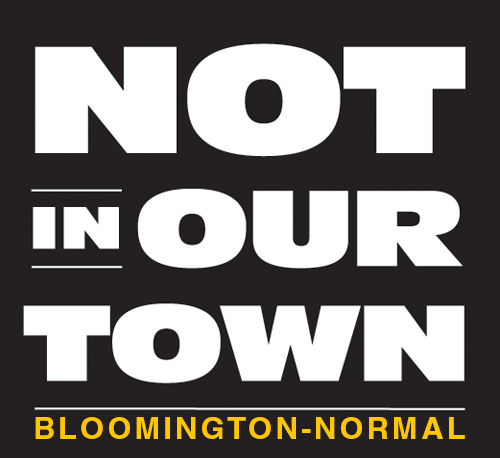Minorities would appear to be “on the downside” of McLean County’s criminal justice system, according to a new study for Not In Our Town: Bloomington-Normal.
In a study conducted by Illinois State University students and the ISU Stevenson Center for Economic and Community Development, researchers uncovered apparent racial as well as gender disparities in McLean County incarcerations.
“On any given day, the McLean County jail population is majority white,” the ISU team noted. However, it is also 32 percent black, “highly disproportional to the population.” Research findings indicate that “there is still work to be done to ensure that minorities are not wrongfully targeted and incarcerated.”
“So if we’re 8 to 9 percent African-American, in the jail we’re about 36 percent African-American,” Stevenson Center study coordinator Frank Beck relates.
The study also indicates a disproportionate frequency in traffic stops and related searches for black motorists, as detailed in Part 3 of this series.
ISU researchers examined patterns in McLean County Jail and court files. Each local booking had a code, frequency, and percentage, and the team focused on each frequency that was higher than five thousand, enabling members to narrow analysis to the most frequent charges.
Students then researched each code to obtain the name of the charge (e.g., domestic battery, possession of drug paraphernalia, first time and previous DUI convictions, and key traffic violations including driving without a license or with an expired license).
Of the 22,157 persons in the jail on felony charges under the study, 17,481 were men, and4,676 were women. Men spent an average 35 days in jail for felony charges, while women spent half as many days in jail.
For overall convictions, blacks and Latinos spend more time in jail than whites. Blacks spent nearly twice as many days in jail than whites, while Latinos fell between the other two groups. That pattern was consistent for both felonies and misdemeanors.
“Future research can hold constant conviction status and charge severity to further determine where disparities are most pronounced,” the team suggested.
The research team also studied the frequency of each group booked on drug charges, identifying a disparity between the races during the late teen years and early 20s. Whites are booked more frequently for drug charges, but frequencies for whites and blacks converge around age 27, which researchers found “extremely significant.”
Blacks comprise roughly eight percent of the total McLean County population, and when the frequencies converge it does not mean the demographics are changing (such as whites “suddenly moving out of the area in droves”). “Around age 27, blacks are booked on drug charges at a rate even more disproportional to the population,” the team concluded.
“Charge severity is even between whites, blacks, and Latinos,” Beck observed. “African-Americans are not likely to be booked on things that are more violent. African-Americans are far less likely to be booked on DUIs. Driving under the influence is very much a white thing – less so Latino, and far less so African-American.”
